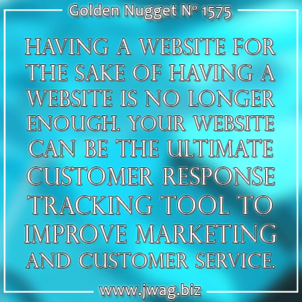
Between your website, local newspaper, direct mail, radio ads, billboard, social media, and word of mouth, it's difficult to calculate exactly how your customers are finding you and what ultimately convinced them to make a purchase. What was once an easy task of calculating the ROI for an individual ad is now impossible because of so many different ways a customer can engage with you online.
"Attribution modeling" is the modern process of analyzing and assigning credit to all those marketing channels that eventually lead to a customer purchase. Marketers commonly refer to this as multi-channel attribution (MCA) and there are several ways to analyze the results depending on what information you need. Determining the appropriate MCA for a retail store is very challenging since there's no exact way to measure the impact of online ads to in-store sales.
This Stuff Is Real
Back in March 2011, Google and HP published a case study showing how every $1 in online ads delivered $5.30 in offline store sales. Similarly, in November 2011, Verizon released their study showing how 5 new accounts were activated in-store for every 1 activated online. Both HP and Verizon developed their own methods of attributing offline sales to the efforts of their online marketing.
Where to Begin Measuring This Stuff
Google Analytics has built in ways to measure traffic to your website from email, organic search, social networks, referral links, direct typing of your website address, and paid search. Connecting that traffic to online sales is easy for Google Analytics when you have an ecommerce website; but those same Google Analytics reports are almost useless for non-ecommerce sites and stores that rely on in-person sales. That is, unless you can figure out a way to associate the data.
The ultimate achievement for any retail store would be to convert to a unified website and in-store point-of-sale system that shares customer and inventory databases. In that scenario, a customer who creates an online account through the website could be directly associated with their in-store purchases. Through website tracking, you'd be able to see the first time a customer visited your website, where they came from, what products they viewed online, and what they ultimately purchased in the store. Attribution modeling would be easy for a unified system such as this, but it would require a significant investment into new systems. (Email me for a list of some unified systems.)
Mundane Tracking Methods That Work Today
Other than converting to a unified system, there are more mundane ways to track how your online channels contribute to your offline sales. For example, you can count the visits to different vanity website addresses used in each of your offline ads even though they all point to the same website. Additionally, a web coupon code is easy to track when redeemed in person. Using different telephone numbers is another common way to track responses to online ads.
Although website addresses, coupon codes, and telephone numbers are easy online tracking methods, I see very few small businesses using them. Domain names are inexpensive and it only takes a few minutes for a website programmer to set up vanity address tracking. You could register 6 or more vanity domain names for under $100 and use them in 6 different ads during the holiday season. Along with the vanity domain names, you can get different free inbound telephone numbers from Google Voice to use in different ads. Even though inbound calls are routed to your business telephone you'll still know exactly which ads they are responding to.
Online coupons can be implemented as a codes that must be mentioned on the telephone or in person. You could even design a banner ad to look like a clippable coupon that must be printed and scanned in the store to receive the discount. Such printable coupons would be easy to deploy through Google Adwords, Facebook, and even Instagram. Don't be surprised when customers ask to redeem smartphone screen shots of your printable coupons.
I've only scratched the surface of attribution modeling and how to track it. If you dig deeply into the attribution modeling information found online, you'll find that everything you do online has some positive effect on your offline sales, you just can't measure it all. However, just because you can't measure it all doesn't mean you shouldn't try.
Are You Wasting Your Marketing Dollars Now?
With so many different ways to measure results, it seems unproductive to pay for online advertising of any type without implementing some method of tracking. Several jewelers I know pay for a social media service that posts daily updates, including birthstone of the month information at the beginning of each month. It's easy for Facebook fans to overlook those birthstone announcements unless you include a discount code in the description or in the image. Throughout the month, you'll know that anyone redeeming that discount found it on Facebook. The same technique can be applied to any social media post.
Sometimes a creative marketing idea is all it takes to have a successful holiday season, but successes and failures leave footprints in the form of trackable data. That data can be found in how you match sales reports from previous years to the data collected in Google Analytics; but there's also a lot of missing data that hasn't been tracked yet.
Time To Get Smarter
Having a website for the sake of having a website is no longer enough. Attributions modeling techniques and the benefits of using them have been around for at least 10 years. Your website can be the cornerstone of your customer and advertising tracking, even if you don't have ecommerce. The time has come to look past simple things like online sales and responsive design and ask your website to deliver valuable information that will help shape future marketing methods and how you meet your customer's needs.








